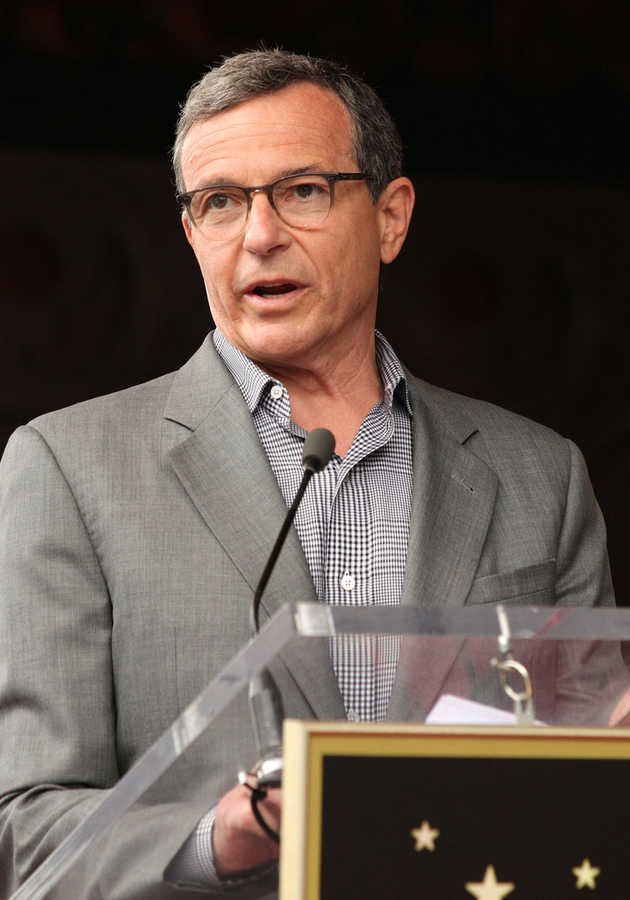Why do great companies fail even when they get everything right? Is there a way for them to avoid their collapse?
These are the questions Clayton Christensen – an American academic, Harvard professor, and religious leader – attempts to answer in “The Innovator’s Dilemma,” the book that introduced the world to the concept of “disruptive innovation,” widely considered one of the most influential business ideas of the 21st century.
The book consists of 11 chapters, neatly divided into two parts: “Why Great Companies Fail,” comprising the first four chapters, and “Managing Disruptive Technological Change,” comprising the remaining six chapters.
It is an excellent book because it successfully manages to diagnose a big problem where many could see none for decades, for the simple reason that the problem Christensen is interested in is, by definition, unnoticeable.
That is to say that Christensen thinks that great companies fail because they innovate for the predictable future, and not for the one they must create if they want to stay in the game.
We are aware that the paragraph above may seem a bit strange at this point, but, trust us, by the end of this summary, it will make sense. Because once Christensen starts presenting his case, it becomes quite a logical why-didn’t-I-think-of-that story.
So, in case the above statement has piqued your fancy, join us and find out what exactly Christensen discovered!
Sustaining vs. disruptive technology
The reason why different companies are innovating for different futures is quite simple – because there are two different ways to innovate.
Early in the book, Christensen distinguishes between these two very different kinds of technologies:
• Sustaining technologies. Sustaining technologies are what the research and development (R&D) departments in most companies do: they focus on perfecting existing technologies. In other words, they are interested in extending the functionality of existing technologies and increasing their capacity.
• Disrupting technologies. Disrupting technologies are something very different. Because they are not merely an upgrade of previous technologies – they are their negation. They create a new landscape and, practically, a new type of business.
So, is Christensen saying that you need to develop your company in the direction that makes your company obsolete?
As counter-intuitive as this sounds, he’s saying precisely that!
To understand it better, let’s go back a hundred years and see the origin of this concept.
Sustainable technologies come with a competitive risk; disruptive technologies come with a market risk
Disrupting the market means creating something new out of the blue, something capable of putting an end to the preceding business cycle, something that might usher humanity into an entirely new era.
This is what the renowned Austrian political economist Joseph Schumpeter understood to be the driving force behind progress in capitalism sometime before World War II. By introducing the concept of “disruptive innovation,” Christensen further develops this idea.
A “disruptive innovation” example the Ford Model T. Once it appeared in 1908, companies producing horse-drawn vehicles were suddenly a thing of the past. Yes – even the largest ones, which earned millions of dollars in today’s money!
Consider “Nokia” for a more recent example. It virtually controlled the mobile market not so long ago but didn’t hop on the Android bandwagon. And Windows Phone is… Well, a “was” now.
However, what Nokia did with Windows Phone could not always end up that way. After all, it was a shot in the dark. Or, more precisely, a market risk. As opposed to a competitive risk – which means competing against others in the same category – a market risk means competing in a league of your own.
In other words, a competitive risk is founding a company for horse-drawn vehicles at the beginning of the 20th century, because you think you can make them better or offer them at lower prices. Market risk is founding an automobile company because you feel this new vehicle is better, even though hardly anyone knows it exists at the moment.
Market risk is riskier than a competitive one. But, according to the analyses of Christensen, it is also far more rewarding.
Motorcycles and excavators
Now, R&D departments of large companies are usually all about competitive risks; in “The Innovator’s Dilemma,” Christensen claims that unless they start taking market risks, they are risking to be outdone, in just a few years, by companies they deem insignificant to bother with at the moment.
“Disruptive technologies,” writes Christensen, “typically are first commercialized in emerging or insignificant markets.” Take Honda, for another example. The company wanted to release a small motorcycle – 50cc – in the United States. Americans said that they didn’t need it. Honda reacted the way a company normally reacts in moments such as these: they decided against it.
By accident, however, young Americans saw the models of the motorcycles that were supposed to be released in the U.S., and realized that these seemed like the perfect dirt track vehicles.
In just a few years, courtesy of some proper management and planning, Honda went on to dominate the entire motorcycle market in the U.S. The strange thing here is that it all started with something that didn’t have a market at all. One could say that Honda’s disruptive model practically created the demand for 50ccs motorcycles in the U.S.
Though slower-paced, the very same shock occurred in the sphere of mechanical engineering with the rise of hydraulics.
Nobody knew that excavators – using a then-new hydraulic system – would be great for digging up small trenches, perfect for residential buildings, until someone tried selling the product and found a market for it.
But when that happened, major mechanical excavator manufacturers suddenly ceased to exist.
The Innovator’s Dilemma
This brings us to Christensen’s main point, best summed up in the chapter with the history of the hard disk drive industry.
So, those mechanical excavator manufacturers and motorcycle companies didn’t do anything bad: they just invested in what their customers wanted them to invest in. The problem is that most customers don’t see out of the box past a certain point.
And, consequently, past a certain point, as counter-intuitive as it sounds, it makes sense to start listening to the minority—because that’s what turned your startup into a multimillion company.
To use Everett Rogers’ “diffusion of innovations” dictionary – yes, we are talking about the innovators and early adopters, they are always a minority.
“Simply put,” writes Christensen, “when the best firms succeeded, they did so because they listened responsively to their customers and invested aggressively in the technology, products, and manufacturing capabilities that satisfied their customers' next-generation needs.”
“But, paradoxically,” he goes on, “when the best firms subsequently failed, it was for the same reasons – they listened responsively to their customers and invested aggressively in the technology, products, and manufacturing capabilities that satisfied their customers' next-generation needs.”
And precisely this is what the dilemma mentioned in the title refers to: “the logical, competent decisions of management that are critical to the success of their companies are also the reasons why they lose their positions of leadership.”
So, should a company blindly keep close to its customers’ needs or should it, after a certain point, start ignoring them and turn its attention toward their noncustomers and the insignificant or emerging markets?
As you might have guessed by now, the latter is the answer.
The five principles of disruptive technologies
Disruptive changes render old products and services obsolete. And, exactly because of this, they almost exclusively affect large organizations.
Ironically, large companies handicap are their own size. These firms communicate with the early (sometimes late) majority and are unaware that these people are the people that, when they leave, they leave in large numbers.
Also, large companies are pretty slow to react, since they have developed their procedures to follow, culture, and value system.
Having all this in mind, Christensen deduces the five principles of disruptive technologies, which are now often taken as somewhat axiomatic:
Companies depend on customers and investors for resources. Customers drive internal decision-making because companies are resource-dependent.
Small markets don’t solve the growth needs of large companies. Large companies are not interested in small emerging markets, and they wait too long.
- Markets that don’t exist cannot be analyzed.
- An organization’s capabilities define its disabilities.
- Technology supply may not equal market demand.
- This is how the world works. And because it is so, large companies often find it hard to adapt.
They simply do not put enough time and effort to explore areas of the market where disruptive technologies might already be in use. But because they are so different from old technologies when they hit the market, these new, disruptive technologies hit it at full stride, and with such power that even leviathans and behemoths are susceptible to collapse.
Disruptive technologies and business strategies
Whereas in the case of sustaining technologies being among the first to sell isn’t always a priority, as far as disruptive technologies are concerned, being the first to sell is quite crucial. Because they are very small (or virtually non-existent), the markets, in this case, can be conquered in matters of weeks or months.
These new markets are, by definition, unknowable. Managers of large companies often make the mistake of venturing into a new, disruptive market with the same mindset that made their companies large in their first place.
However, it doesn’t work that way. Growth rate, predictions, plans – they are all deceiving in the case of a new market if disruptive (remember Honda?). The only thing is: you don’t know which innovation might disrupt a market.
Consequently, managers should begin this kind of journey with a sense of discovery in their minds. Expect failure, and data gathering should be the ultimate goal.
Managers also tend to think that their established RPV (resource, process, value) model will always work. For large, successful companies, resources (employees mainly) are not the main focus. Instead, it’s all about processes and values.
It makes sense for a company to make its goals, processes, and values a priority, and not its people: common sense dictates that values and processes should be inflexible if they bring success, and the people who put these into practice can rotate.
However, in the case of disruptive technologies, it is very different for the simple reason that they radically change the processes and values in an industry.
In this case, it should be all about the people capable of revolutionizing a sphere of human endeavor. It has always been so.
Seven Insights from The Innovator’s Dilemma
In the final chapter, Christensen shares his main conclusions. We present to you these in the form of seven “simple and sensible” insights:
Market progress is different from technological progress. The reason is simple: customers don’t always know what they need.
Innovation requires resource allocation, which is extraordinarily difficult to do right when it comes to disruptive technologies.
Disruptive technology always needs a new market. Old customers are not relevant anymore. Disruptive technology is, more or less, a marketing problem – not a technological one.
Large organizations are incapable of adapting quickly. New markets enabled by disruptive technologies, by definition, require very different capabilities than the ones that made the large organizations – large.
Disruptive technologies create the markets for themselves, which means that, when they appear, there is never enough data for the market one to make an informed decision. Disruptive markets require failure and iterative learning: large companies are not used to this kind of learning.
Disruptive innovations reward leaders that are willing to take risk.
Small firms enjoy a much better position to disrupt a market because they are doing things that don’t make sense to the industry leaders. For the same reason, they are entirely protected.
Final Notes
Back when it was published, in 1997, “The Innovator’s Dilemma” was received with acclaim by just about every business thinker and won the best business of the year award. Soon after, The Economist named it one of the six most important books about business ever written.
Besides, Christensen’s book was a favorite of Steve Jobs and, whether you liked him or not, you’d have to agree that this means something.
It is undoubtedly one of the most important books on innovation ever written, and it has had profound implications already. So profound, that there are definitely many large companies out there that owe their existence to Christensen’s insights.
12Min Tip
Always being on the lookout for improvement isn’t enough. If you want to survive in an age of rapid technological advancement, you need to invest in what your customers don’t want as well. So, don’t hesitate: buy small companies (with their employees) that you think are capable of disrupting the market where you’ve established yourself as a leader as soon as they emerge.




























